Everything you need to know about Second Grade Math with Confidence. Includes an overview of what your child will learn, a downloadable sample, answers to frequently asked questions, and buying information.
In this article, you’ll find all the information specific to Second Grade Math with Confidence:
- How the program and lessons are organized
- What your child will learn
- What you’ll need
- Placement advice
- Where to buy the books
For information about the series as a whole (or information on other grade levels), please see this article: Overview of Math with Confidence Homeschool Math Curriculum.
Wishing you all the best in your teaching! Happy Second Grade Math!

What’s the program’s format?
Second Grade Math with Confidence is a complete second-grade math program with two volumes: an Instructor Guide and a Student Workbook.
- The Instructor Guide is the core of the program, with conversational and hands-on activities and games that teach the key skills and concepts.
- The Student Workbook provides 2 short workbook pages each day. The front side provides practice with new skills. The back reviews previously-learned material.
Second Grade Math with Confidence has 32 weeks of lessons, with 4 required core lessons and 1 optional enrichment lesson per week. This gives you the flexibility to take one day off per week for field trips or errands without worrying that you’re falling behind. (See below for more on the optional enrichment lessons.) And, you can take the occasional Grandma’s-visiting/broken-dishwasher/everyone-has-pinkeye week off, and you’ll still be able to finish the program in a typical academic year.
If you used First Grade Math with Confidence, you’ll find the format for the Second Grade program very familiar. It has the same overall flow to the lessons, weeks, and units, and it uses many of the same manipulatives and representations to build your child’s confidence with the new skills and concepts.
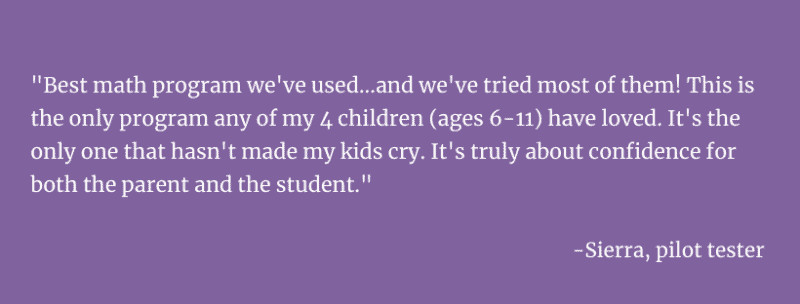
What’s a typical lesson look like?
The lessons are short and simple. Most of the pilot families said they take about 20-30 minutes from start to finish. You’ll spend about 10-15 minutes teaching the lesson, and then your child will take 10-15 minutes to complete the workbook pages.
Each lesson includes 3 parts:
- Warm-up: Counting, Memory Work, and Review. Each lesson begins with a short warm-up to practice counting, memory work, and key skills. Warming up like this also helps build your child’s confidence and starts the lesson on a positive note.
- Hands-on teaching. Next, you’ll teach your child a new concept or skill with hands-on, conversational activities. For example, you might play a math card game, play “Chocolate Shop” to practice adding two-digit numbers, or roll dice to create a bar graph.
- Workbook. Last, your child will complete 2 short workbook pages. On the front side, he’ll practice the new concept that you taught him in the hands-on activity. On the back, he’ll review previously-learned skills. Occasionally, you’ll use the front side of the workbook page during the hands-on teaching part of the lesson.
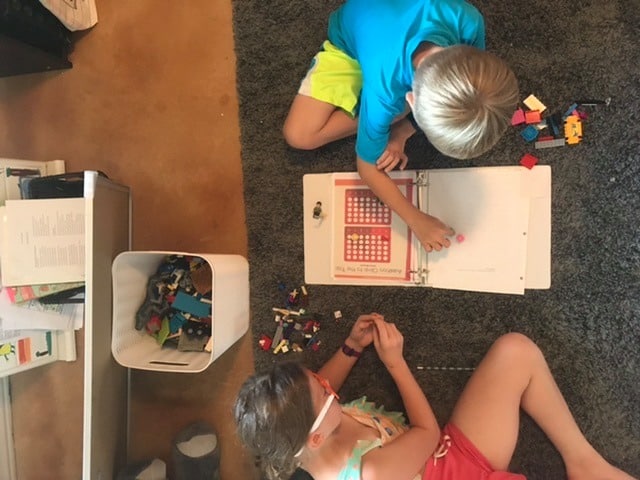
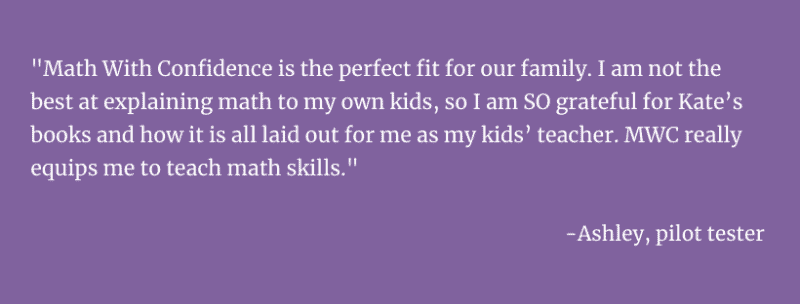
Can I download a sample?
You bet! You’ll find the full introduction, scope and sequence, and materials list, plus a variety of lessons from across the year so that you get a good sense of the program as a whole. Make sure to download both files so that you can see both the scripted Instructor Guide and full-color Student Workbook.
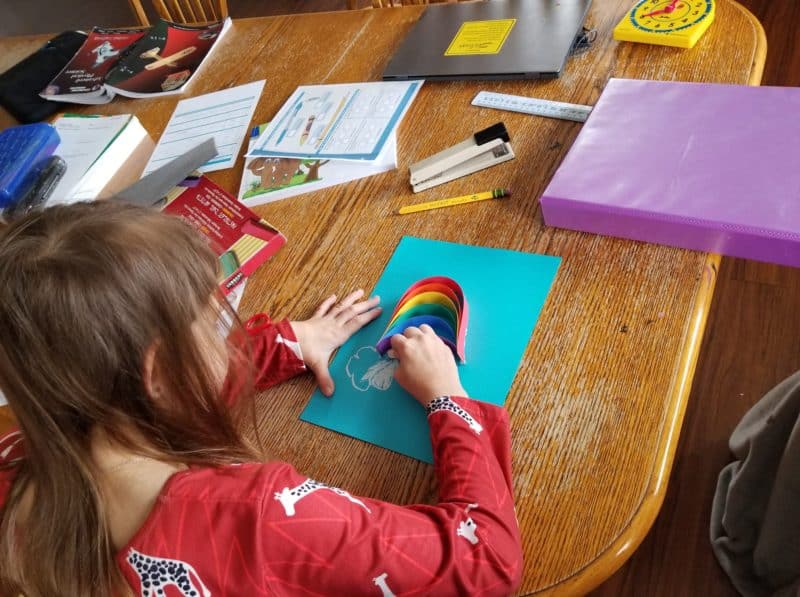
What will my child learn?
Second Grade Math with Confidence is a full-year, comprehensive curriculum that covers everything your child needs to learn in second grade. She’ll learn to:
- Read, write, and compare numbers to 1000
- Understand place-value to 1000
- Add and subtract 2- and 3-digit numbers
- Solve addition and subtraction word problems with numbers to 100
- Create and read bar graphs, line graphs, and pictographs
- Write money amounts with a decimal point
- Tell time to the minute
- Measure length with the appropriate unit
- Divide shapes into equal parts and name the parts with written fractions
- Identify 2-D and 3-D shapes
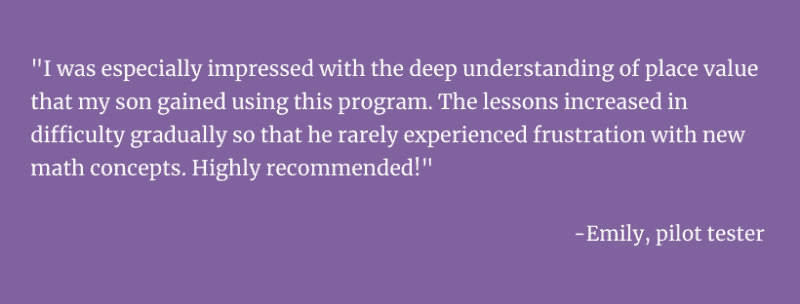
What materials will I need?
I’ve kept the materials list as simple and budget-friendly as possible, just like in the earlier levels of Math with Confidence: base-ten blocks, counters, coins, play money, playing cards, dice, a clock with hands, a ruler, a dry erase marker, and a few plastic page protectors. (The pilot testers also recommend a binder with plastic page protectors for storing blackline masters and game boards.)
If you don’t already own base-ten blocks, you can find them online for about $25 or at school supply stores. Besides these, you’ll also sometimes use household items like stuffed animals, small toys, or crayons.
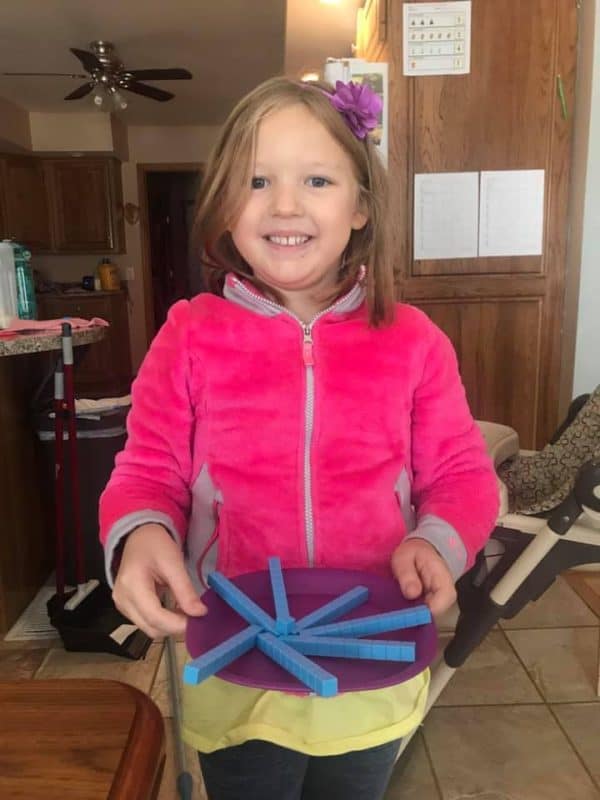
How are picture books incorporated?
Each week includes an enrichment lesson with a picture book and real-life math application activity. These are completely optional, and you can include as many or as few as you want over the course of the year. Some families do these on the fifth day of the week, some incorporate them into their Morning Time or read-aloud time, and some families skip them entirely.
Related: Second Grade Math with Confidence Picture Book List
Keep in mind you don’t have to drive yourself crazy tracking down every book. Many of them are also available as read-alouds on Youtube. It’s perfectly fine to just grab a few math picture books from your library and read those instead if your library doesn’t have many of these titles.
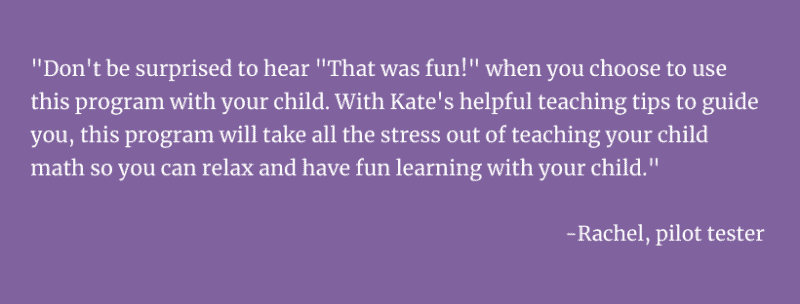
Is my child ready to start Second Grade Math with Confidence?
Most children are ready to start Second Grade Math with Confidence when they are 7 years old. Your child is ready if she can:
- Count to 100 by 1s, 2s, 5s, and 10s.
- Read, write, and compare 2-digit numbers.
- Understand the meaning of the tens-place and ones-place in 2-digit numbers.
- Write simple addition and subtraction equations, and solve simple word problems with single-digit numbers.
- Know most of the addition facts up to 9 + 9.
- Know most of the subtraction facts that involve subtracting from numbers up to 10 (for example, 7 – 4 or 10 – 6).
- Know the names and values of coins and identify combinations of a few coins.
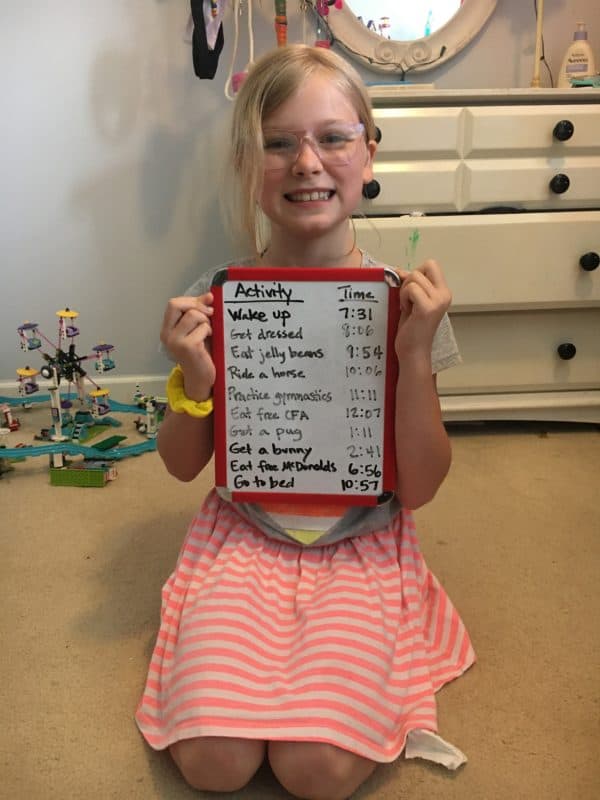
If you have more questions about placement, check out this article for more advice and answers to frequently asked questions:
Will there be other grades? Is Math with Confidence a full series?
Yes! See this article for the release dates and more information on other grades.
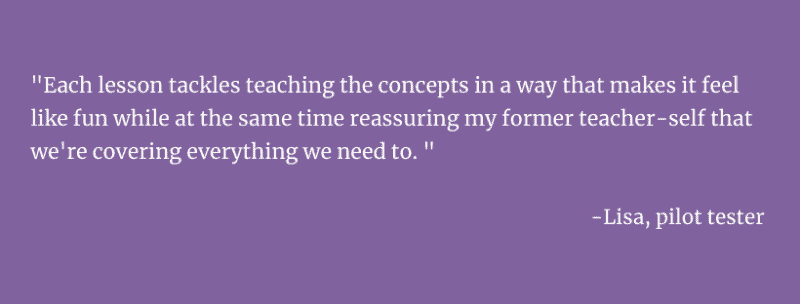
Where can I buy Second Grade Math with Confidence?
Print copies are available now at Amazon, Well-Trained Mind Press, and other major homeschool booksellers.
Digital copies (PDFs) are available only at Well-Trained Mind Press. For the Student Workbook, you’ll automatically receive both the standard version and the printer-friendly version.

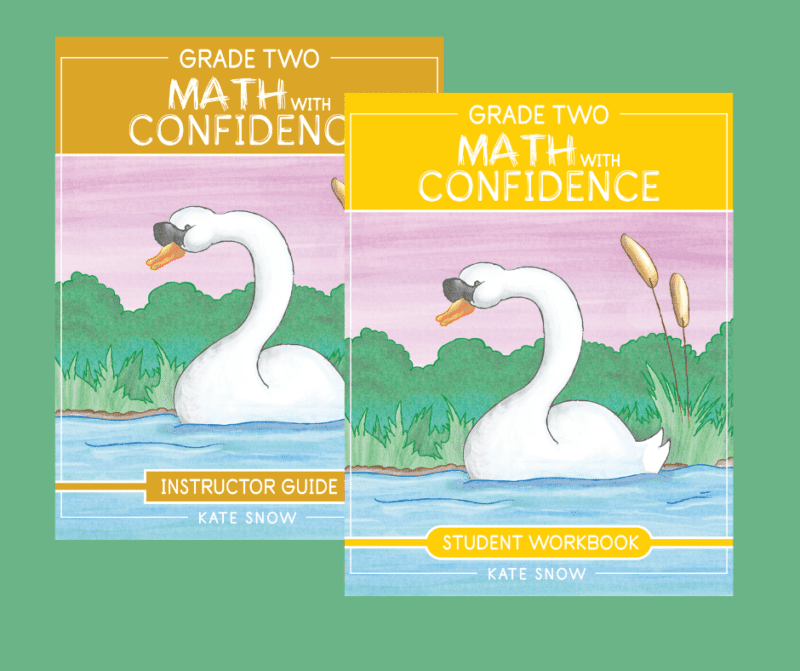
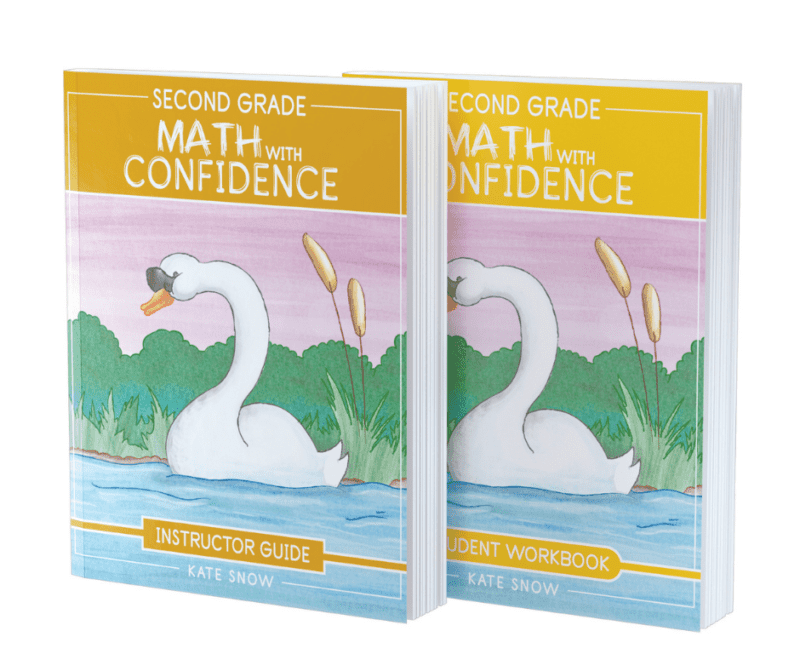
My child is about to start school this year and I’ve looked everywhere for a comprehensive and friendly math program for after school since I remember struggling with math and I hope it becomes a fun and interesting subject for her. I found Singapore math and seemed really attractive, but honestly once I found your Preschool Math at Home and now your Math with Confidence programs I knew I’d hit the jackpot! These books are so easy to follow and come with so many ideas and games to supplement learning that not only my daughter will understand this subject, but also I’ll have confidence enough to teach her. Thank you for these wonderful resources!!
Hope you have a wonderful year with it, Caro! Happy Math!
We have used your Math Facts That Stick series and love them, so I’m excited to check this out. How do you think they would work for students with dyslexia, dysgraphia, and dyscalculia? We are struggling to find something that works and have been playing with right brain methods with moderate success. I feel like we might give it a go anyway bc the pages look very doable and not overwhelming!
Hi Alicia,
Many families with kids with special needs have found it a good fit, because of the clean pages, incremental teaching, and spiral review. If your child has had success with the visual approach of Math Facts That Stick, that’s a good sign that MWC will be a good fit, too!
Happy Math!
Kate
I am adult with dyscalculia. It actually looks very good easy to follow. Even though I am all grown up. According to the tests I took. I am about at the skill level of the book. Very embarrassed to say that.
Do you recommend an abacus for your program?
It’s not necessary, but an abacus or rekenrek can be a nice add-on. (Especially for kids who dislike the ten-frame or who get distracted by moving counters!)
Happy Math!
Kate
Hello,
My daughter was using the 1st grade book and expressed wanting something quicker paced. She was feeling like it was too easy for her, despite enjoying the games quite a bit. My son, a few years older, uses Beast Academy. My oldest uses AoPS, as it’s the only online program I’ve found that doesn’t use all multiple choice questions. I switched her to BA level 1 and while she likes it, I am concerned there isn’t enough reinforcement of concepts for a 6 year old. It’s been great for my boys, but they started using it later. I thought about having her use the 2nd grade book, since maybe she just needed a little bump rather than a curriculum change. Are you able to weigh in at all with program comparisons? Or your thoughts on the best solution? Any info. is much appreciated.
Hi Lindsay,
The tricky thing about Math with Confidence is that I’ve designed it to build incrementally and gradually. It provides lots of reinforcement and practice, so kids feel confident in math have no trouble jumping from one skill to the next. As a result, kids sometimes feel it’s easy simply because they’re picking up math with so little resistance. My suggestion is that you look at what she’s actually able to do as you make the call, rather than relying on her sense of it’s difficulty level. If she actually knows most of the skills in the first grade book, bumping her up to the second grade book could be a great solution. But if she doesn’t, you might want to just condense lessons and continue through the first grade book at a quicker pace to make sure she really has mastered the material. Skip review activities that she already has mastered, do a couple lessons per day, etc.
Regarding, BA: Beast Academy can be a great stand-alone program, but I agree that you’d want to keep an eye on her to make sure she’s really learning the foundational skills (especially the math facts).
Happy Math!
Kate
Good morning,
I have reviewed several math programs (this will be my first year homeschooling). I really love your curriculum, and I will be starting the first grade level with both of my boys (I will actually take them down a grade to make sure they have a solid foundation before moving on). My question is, I will like to have more practice sheets for them as they really struggle with math. I know the games will provide practice, but I thing more written practice will help. What do you suggest for additional written practice?
Hi Lucy,
I like Kumon books for practice, since they’re well-designed, incremental, and inexpensive. The first grade Kumon math books generally match MWC, so you can pick and choose the skills you most want your sons to practice more.
Happy Math!
Kate
I have a 5.5 year old officially starting kindergarten in the fall and I’m unsure where to place him. He can do everything on the list for ready for 2nd grade, but he has never done an official curriculum- he just LOVES math. So I hesitate because I think he could start with 2nd, but I’m worried he doesn’t have a strong foundation since he hasn’t done anything formal before. Thoughts?
Some kids really do pick up math quickly! I’d recommend doing Addition Facts that Stick with him as an intro to formal math lessons (and as a way to make sure he really has the addition facts mastered). Then, go ahead and start Second Grade and see how it goes. If he hits a wall, you can always pause it, go back to First Grade, and then pick up Second Grade again down the road.
Happy Math!
Kate
I’m looking to switch to MWC. I did Saxon Math 1 with my first grader last year and I’m a little worried that he won’t understand the terminology or be lost with a different program. Do you think that transitioning from Saxon would be confusing? Should I start with MWC grade 1 instead?
Hi Katelyn,
When I wrote Second Grade, I figured there would be families new to the program, so unit 1 reviews core ideas from first grade and introduces new families to the MWC distinctives like the ten-frame and part-total mat. I don’t think you’ll have any trouble, and I’d definitely recommend going with Second Grade MWC as long as he knows his addition facts to 10 + 10 and subtraction facts up to 10 (like 9 – 6 or 8 – 2)pretty well.
Happy Math!
Kate